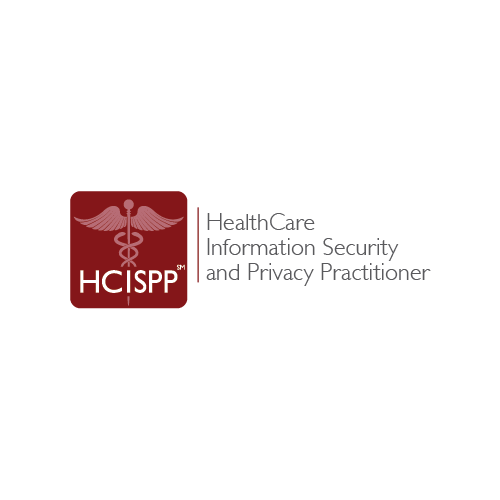
Cybersecurity isn’t just an IT issue anymore. With patient data breaches on the rise and regulatory scrutiny intensifying, the stakes have never been higher. But amid tight budgets and competing priorities, how can you effectively protect your patients’ information without compromising care delivery?
This article cuts through the jargon to offer practical, cost-effective cyber hygiene strategies tailored for behavioral health agencies. We’ll focus on high-impact measures that strengthen your security posture without overwhelming your staff or breaking the bank.
Understanding Cyber Hygiene
Cyber hygiene refers to the daily practices and precautions individuals and organizations take to maintain the health of their cyber environment. Much like regular handwashing prevents illness, consistent cyber hygiene practices protect systems and data from breaches and cyber threats. For behavioral health agencies, the stakes are particularly high. The data handled is not only sensitive but also personal, requiring the utmost protection.
Behavioral health executives, IT managers, and program managers are at the frontline of this battle, tasked with the responsibility of implementing and maintaining these practices. By fostering a culture of cyber hygiene, these leaders can significantly reduce the risk of data breaches and enhance overall security.
Practical Tips for Effective Cyber Hygiene
Regular Software Updates
One of the simplest yet most effective steps in maintaining cyber hygiene is ensuring all software, including Electronic Health Records (EHR) systems, is kept up to date. Software updates and patches are released to fix vulnerabilities that cybercriminals can exploit. Delaying updates can leave your system exposed to attacks.
To manage updates efficiently:
- Enable automatic updates wherever possible.
- Schedule regular maintenance windows for manual updates.
- Keep a log of updates applied to monitor system health.
Strong Password Practices
Passwords are the first line of defense against unauthorized access. Weak passwords can be easily cracked, compromising your entire system. Implementing strong password policies is essential, and it’s important to stay current with best practices as outlined by the National Institute of Standards and Technology (NIST).
Guidelines for Strong Passwords:
- Use Length Over Complexity: NIST recommends focusing on password length rather than overly complex combinations. Aim for passwords that are at least 12 characters long.
- Incorporate Passphrases: Combine multiple words into a phrase that is easy to remember but hard to guess, such as “BlueSky$RunningHorse”.
- Avoid Predictable Patterns: Steer clear of easily guessable information like birthdays, common words, or repetitive sequences.
- Regular Updates: Encourage users to change passwords periodically, especially if there’s a reason to believe their account might be compromised.
- No Reuse: Ensure that old passwords are not reused. Each new password should be unique to maintain security integrity.
For enhanced security, employ password managers to generate and store complex passwords and enable multi-factor authentication (MFA) to add an extra layer of protection.
Employee Training and Awareness
Human error is a leading cause of data breaches. Regular training and awareness programs for employees can significantly mitigate this risk. Educate your staff about the latest cyber threats, such as phishing, ransomware, and social engineering attacks.
Effective training programs should include:
- Simulated phishing exercises to identify vulnerable employees.
- Regularly updated training materials reflecting the latest cyber threats.
- Clear protocols for reporting suspicious activities and internal threats.
By making cybersecurity a shared responsibility, you empower your team to act as the first line of defense.
Data Encryption
Encryption is a powerful tool for protecting sensitive information. It transforms data into an unreadable format that can only be accessed with a decryption key. This ensures that even if data is intercepted, it remains protected.
Types of Encryption to Consider:
- Data at Rest: Encrypting data stored on devices or servers.
- Data in Transit: Encrypting data being transmitted over networks.
Implementing strong encryption protocols is crucial for protecting patient data, especially in behavioral health settings where confidentiality is paramount. Under HIPAA, using encryption can also provide a “safe harbor” that exempts your organization from breach notification requirements if encrypted data is accessed or stolen. This means that encrypted data breaches are not considered reportable incidents, reducing the potential regulatory impact on your organization. By adhering to these encryption standards, you ensure both compliance and the highest level of security for sensitive patient information.
Regular Backups
Regular backups are essential for recovering from data breaches, ransomware attacks, or system failures. Backups ensure that you can restore critical data with minimal disruption to your operations.
Best practices for backups:
- Schedule automated backups at regular intervals.
- Store backups in secure, offsite locations to protect against physical damage.
- Test backup and recovery processes regularly to ensure they work correctly.
Having reliable backups means you can recover quickly and maintain continuity in patient care.
Access Controls and Monitoring
Limiting access to sensitive data reduces the risk of unauthorized access. Implementing role-based access controls (RBAC) ensures that employees only have access to the data necessary for their roles, in accordance with the Minimum Necessary principle.
Steps to implement effective access controls:
- Define and document access levels for different roles within the organization.
- Use robust authentication methods to verify user identities.
- Regularly review and update access permissions to reflect changes in roles or employment status.
Continuous monitoring of network activity is also essential. By using intrusion detection systems and regularly reviewing logs, you can identify and respond to suspicious behavior before it leads to a breach.
Tools and Resources for Maintaining Cyber Hygiene
Maintaining effective cyber hygiene requires the right tools and resources. Several cybersecurity tools can help safeguard your systems and data:
- Antivirus Software: Protects against malware and other malicious software.
- Firewalls: Acts as a barrier between your network and potential threats.
- Intrusion Detection Systems (IDS): Monitors network traffic for suspicious activity.
Continuous compliance with cybersecurity standards is essential. Partnering with Xpio Health gives you access to comprehensive cybersecurity solutions, including risk assessments and policy development. Additionally, leveraging platforms like Vanta simplifies maintaining compliance by providing automated monitoring, ensuring you meet all regulatory requirements without constant manual checks.
Maintaining strong cyber hygiene practices is crucial for protecting patient data in behavioral health settings. From regular software updates to robust employee training and data encryption, these simple steps can significantly enhance your cybersecurity posture.
How confident are you in your organization’s current cyber hygiene practices? Contact Xpio Health today to ensure your patient data is protected with the best cybersecurity measures.
#CyberHygiene #PatientDataProtection #HealthcareIT #PeopleFirst #BehavioralHealth #XpioHealth




